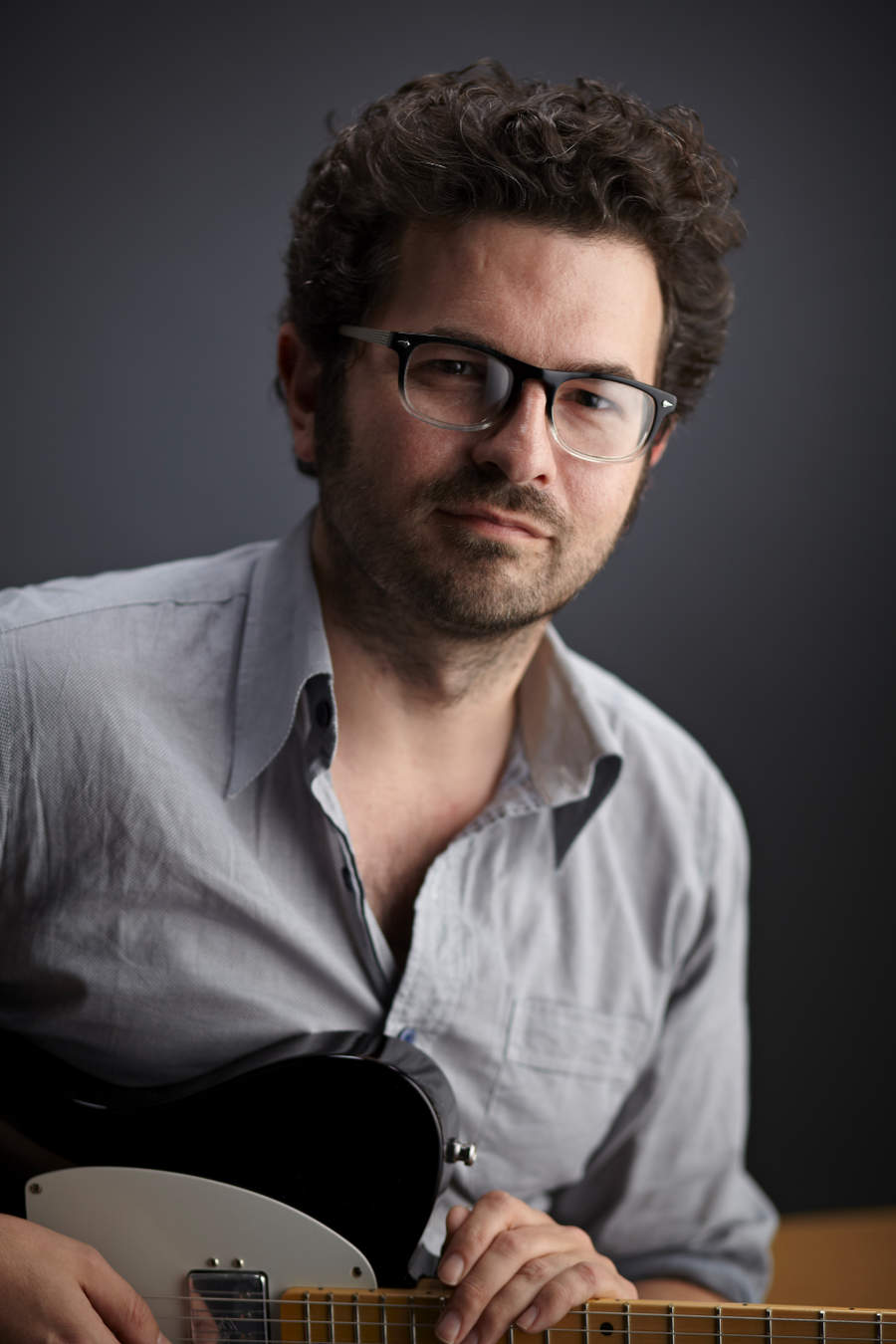Duane Eddy: “Our echo chamber was actually a 2,000-gallon water tank. We went down to the Salt River, visited a junkyard there... and we yelled into tanks”
Classic Interview: The rock 'n' roll icon on tone, hit-making and Hazelwood
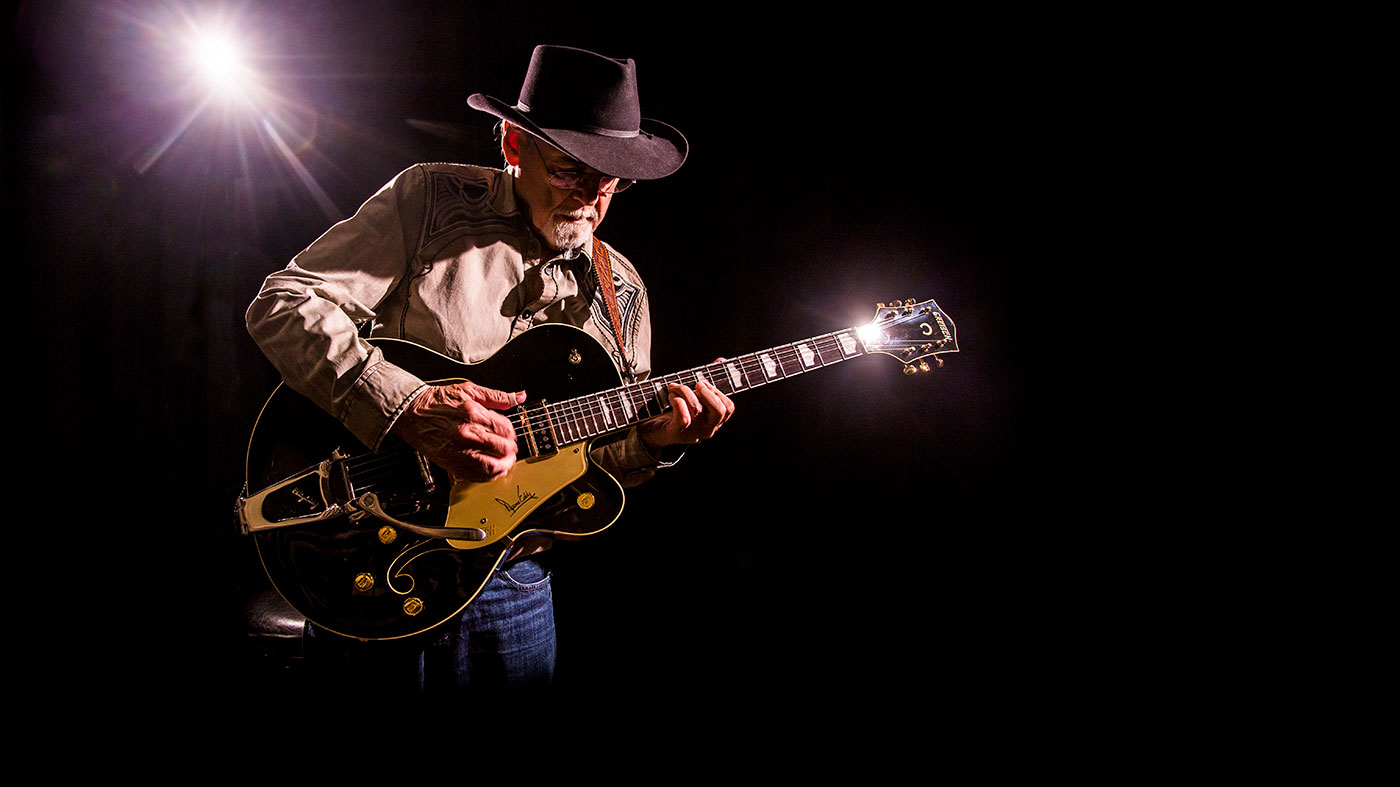
Duane Eddy, the "Sultan of Twang" has passed away at the age of 86, after a genre-defining career. Here, we're republishing this archive interview in tribute.
Classic Interview: He’s the original king of twang guitar and his canyon-deep sound made him America’s first guitar hero of the rock ’n’ roll era.
Back in 2019, we caught up with Duane to talk about playing to mysteriously silent English crowds on his first tour back in 1960, his friendship with jazz guitar greats - and how a 2,000-gallon water tank became an essential part of his tone...
London Calling
“Touring England for the first time in 1960 was a fantastic trip. It was more of an adventure than a tour. It was my first time in England and when we got off the aeroplane and started for our hotel, we marvelled at how much England looked just like it did in the movies, with the English cabs and the double-decker buses. We were just thrilled.
England and I fell in love with each other on that tour, in 1960. It’s never stopped
“We were used to kids screaming and yelling and carrying on during the songs and all through the show in America. But then we got there that first night in London, there was just polite applause after every song. Finally, the sax player, Jim Horn, kind of sidled over to me during a song and he said, ‘I don’t think they like us.’ And I said, ‘Yes, it looks like it’s going to be a long night.’
“I said, ‘Well, maybe they don’t like this music. We’ll play something they’re bound to know. Maybe they want something familiar that’s older?’ so we played Greensleeves, which we’d never played. Jim got out his flute instead of his sax and I had such a great band that they’d follow me off a cliff, musically speaking. You couldn’t tell we hadn’t rehearsed it or played it before.
“But that didn’t work, either. Still polite applause, until the very end of the show and then when I played the last song and they dropped the curtain, the place went wild. They stamped their feet, they clapped their hands, they yelled and then they started this chant, ‘We want Duane.’
Want all the hottest music and gear news, reviews, deals, features and more, direct to your inbox? Sign up here.
“What it was, I found out later, they had never heard a band that sounded so exactly like the records. I had the same musicians I used on some of the records with me. So the audience got the full impact. The reason they were polite, I learned since, was that they just wanted me to get on with it. They didn’t want to take up time with applause, they just wanted me to get on so they could hear more. So England and I fell in love with each other on that tour, in 1960. It’s never stopped.”
Modded Magnatone
“There was a bass player in Phoenix named Buddy Wheeler, who was also a pedal steel guitar player. He and a friend of his, Dick Wilson, who’s a guitar player in Phoenix, modified Magnatone amps. They originally had two Jensen speakers in them. Well, they did away with those and put a 15-inch JBL and a tweeter in the amp, a 100-watt power pack and a spring echo, and then hooked it all together. Then they covered the case with black Naugahyde with a white grille front and charged $100 for it, which was a lot of money in 1957. They did that for several guitar players around town.
“That was my amp. That was the one I played Rebel-Rouser through and it was the most powerful amp and one of the best amps in the world at the time. I compared it with a Standel, which was supposed to be the best amp in America at the time. That’s what Chet Atkins played. But when I played through the Standel it would break up at a certain point. But you couldn’t get mine to break up no matter how hard you hit the notes. They just rang clear as a bell.”

Rebel Rousing
“I love Merle Travis and Chet Atkins, Hank Garland... Les Paul, of course. Loved what he did. But as for my own sound, I came up with that because I had done a few sessions when I was 16, 17 in Phoenix. I was working in a country band and playing guitar as sideman. Friends would do sessions and they’d ask me to come play - and I discovered that the high notes weren’t as powerful as the low notes when I got to do a little solo or a turnaround or something. So I realised the bass strings were stronger, recording-wise, especially in those days.
I wrote Rebel-Rouser at the session in the studio... I pictured a gang of thugs coming down the alley towards me with their chains and their switchblades
“We had to use three or four rhythm guitars to get a good rhythm guitar sound, like on Cannonball, to where it would record properly. So, I realised that I had to come up with a melody as opposed to a riff, or some kind of a hook or something. So, with Movin’ ’N’ Groovin, I thought, ‘Well, I’ll try high and low.’ And I did the high part and the low part, and they were both hooks that I just put together.
“After that got up to 70 or so in the Billboard charts they said, ‘Go back and do something else.’ So, in March of ’58, we went in and I wrote Rebel-Rouser at the session in the studio - just had the drummer play a backbeat and I fooled around with this melody that was in my head and came out with the song. I pictured a gang of thugs coming down the alley towards me with their chains and their switchblades and everything. That was the mental picture I had.
“Also, I wanted to leave a long space in front so I had time to get on stage. I pictured myself just playing that and then walking out on stage while I’m playing it and then the spotlight hit me as the band came in. So those were the mental images I had when I wrote it.
Never Repeat Yourself
“The first fight I ever had with my producer Lee Hazlewood - well, it was not a fight but a disagreement - was after we’d done this record called Mason Dixon Lion. It was about the same tempo as Rebel-Rouser and he said, ‘Well, that’s going to be the next thing going.’
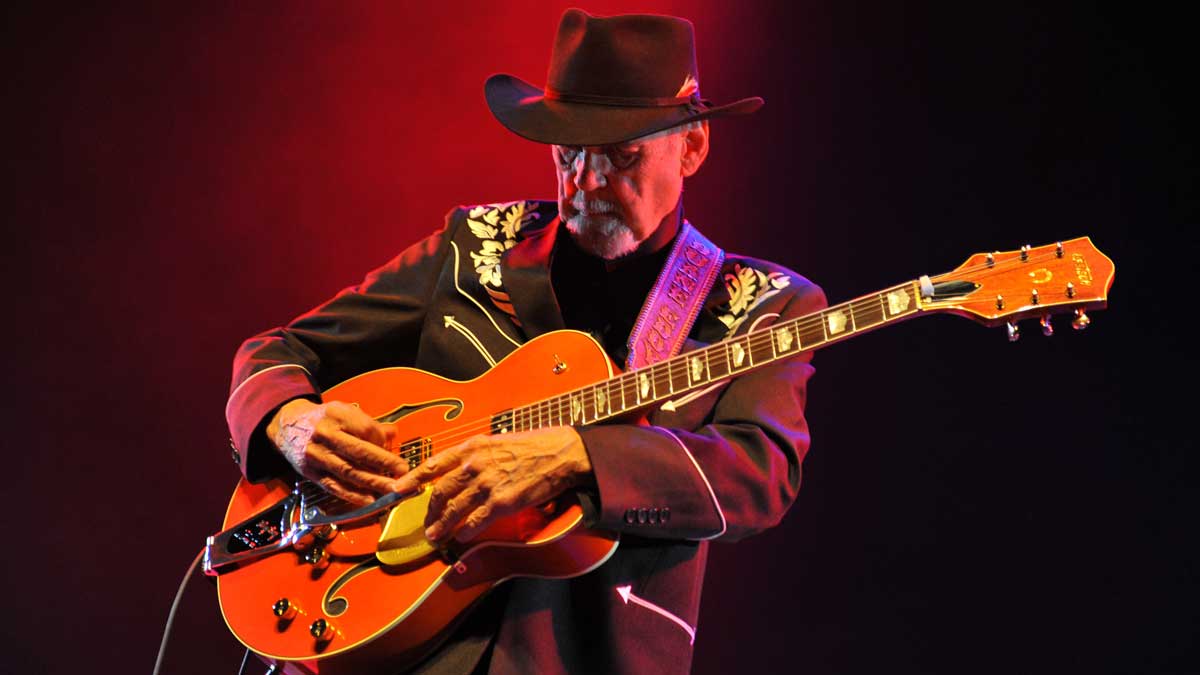
Duane Eddy: “You use the technology and don’t let it use you. I can’t get that through to people”
“But I said, ‘No, it’s not.’ He looked at me in surprise and shock, because I’d never said, ‘Boo,’ before that. He said, ‘What do you mean, it’s not?’ And I said, ‘No, we don’t want to do that, Lee.’ I said, ‘It’s Rebel-Rouser sideways. I mean, it’s got too many of the same elements and people will think we’re trying to recreate Rebel-Rouser.’
“To give him credit, he saw the wisdom of that, because we’d seen people who had have one successful record and then they’d come out with a second one that was similar to that trying to recreate their first hit, and it wouldn’t go anywhere and that would be the end of their career. So, I said, ‘No. Please, no.’ So, it ended up on the B-side and that was the end of that.
“Those are traps you can fall into when you are writing. It wasn’t exactly similar or anything - and, in fact, the melody was entirely different. But it had some of the same elements and I thought it was too close. When people do that, they plagiarise themselves, you know?”

Mix Mastery
“Lee Hazlewood had been a disc jockey before he became a record producer. He sat in there for three or four years, I think, doing that. He’d listened to these records and he intended to be a producer, so he listened on good equipment in a radio station in those days, the best you would have anywhere. Better than anybody’s home hi-fi. You had these big speakers so you could hear the records and everything, and great turntables that were balanced because they wanted to be perfect to go out over the air.
That’s the way we did it. We’d do one song a day
“So he’d sit there and listen. He’d listen to the bass sound on this record and that record and how Pat Boone’s records were louder than some of the others, they were mastered hotter, and how the piano sounded on this one and that one. He knew all these sounds in his head. So, we started working on a song. We seldom got more than one song a day because we had another handicap I’ll tell you about in a minute.
“He would work with Jack Miller, the engineer, on our primitive three-track, four-track equipment and get those sounds that he heard that he thought would fit with a particular track we’re doing. As a result, I think the sound on those records still holds up pretty good today. Anyway, that’s what he did.
“It would take us all day until he could get everything where he wanted it, because he had to mix it on one track. Then he’d have to leave an open track for over-dubbing the sax, because we didn’t have a sax in Phoenix. We had to take it to Hollywood and overdub the sax and any voices or strings. That’s the way we did it. We’d do one song a day.”
Watery Sound
“Now, our echo chamber was actually a 2,000-gal water tank. We went down to the Salt River and visited a junkyard there. Floyd Ramsey, who owned the studio, Jack Miller, the engineer, and Lee and I went round the place and we yelled into tanks that might work as a reverb chamber - they had holes at each end. Lee would go, ‘Whoop!’ and he got an echo out of them.
“He finally found one that he yelled into and he liked the echo, so they bought it for a couple of hundred bucks and trucked it up to the back of the studio. Jack Miller, the engineer, built a pinewood cradle for it. It was about 8ft tall and about 15- or 18ft long. So it was a big thing.
“Jack put a speaker in one end and a mic in the other. He’d run, say, my guitar and the band through the speaker and it’d swirl around in the tank and into the mic at the other end, and we’d have our echo. It worked. Then, of course, Lee would take - when he took it to Gold Star Studios in Hollywood, they had the best echo in the world at that time and he’d have their record, mix it with ours. That’s why it had such a wild echoey sound on many of those records. That’s how we recorded it.”
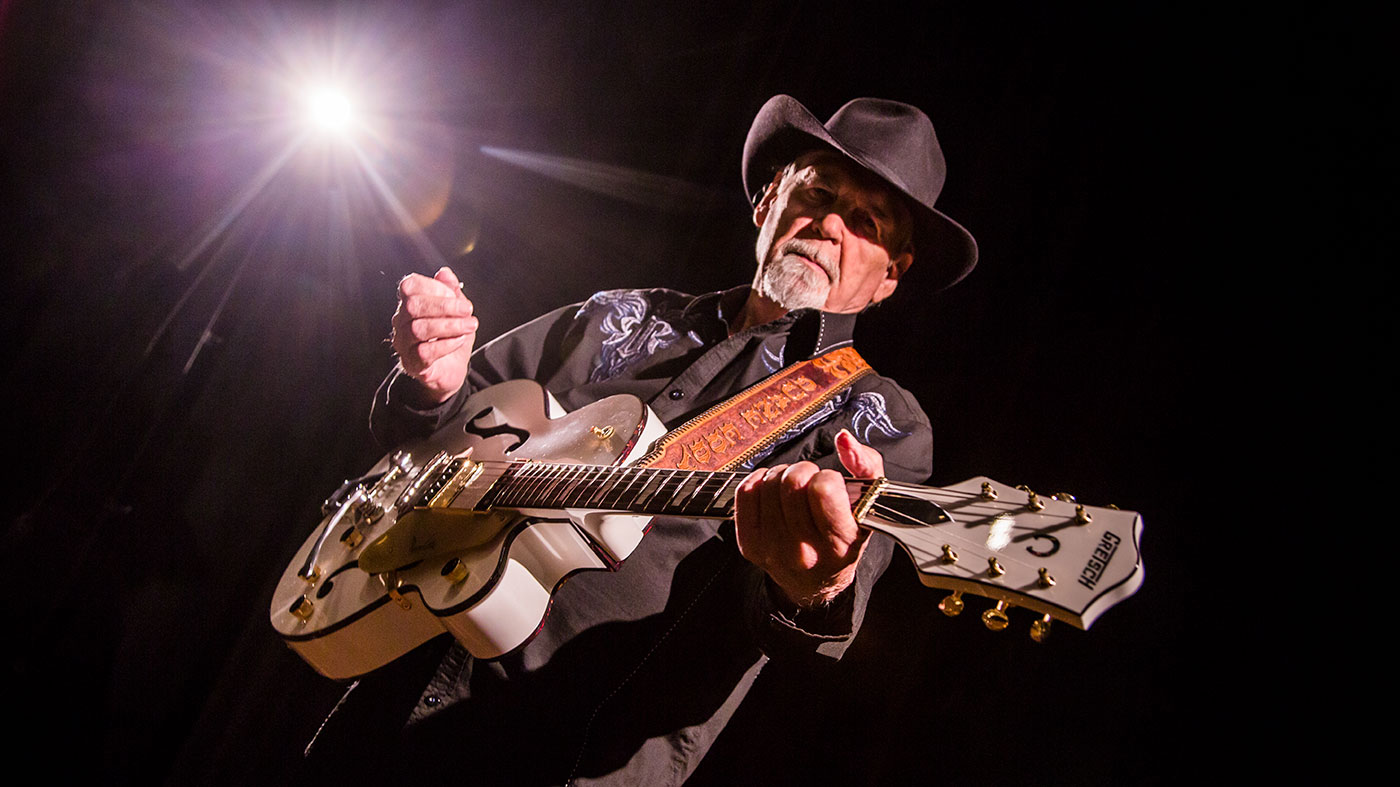
Among Giants
“When we later on went to LA, I did two songs in three hours with Because They’re Young because that was my first proper session. There were some wonderful jazz players present: Barney Kessel, Howard Roberts, Shelly Manne and Red Callender were the rhythm section and I had the LA Philharmonic Orchestra, about 30 of them anyway, came in there and we did it all live in the studio.
“We finished up early because Bob Thompson had charts written and I knew what I was going to play. So I knew the arrangement and, in fact, we finished 15 minutes early. When we were done, Howard Roberts started showing Barney Kessel some new guitar he’d bought, some new old guitar, I should say. It was, you know, an antique, but beautiful. One of those gorgeous hollow-bodied [archtop] acoustic guitars.
We got our own little personal concert by these giants of jazz, which was a wonderful experience
“Anyway, Barney started playing it, so Howard picked up another acoustic and started playing rhythm with him. They started jamming a little bit there and Shelly Manne picked up a couple of brushes and sat back down at his drums - he was just starting to pack them up - and started playing with them. Red Callender picked up his upright bass and played.
“I had albums by these guys on, along with a [vibes player] named Red Norvo. That same section, that same four guys, had played with Red Norvo. I’ve still got the albums today and I would listen to them to crank myself with jazz and things. Eddie came out from the booth and Lee, and we stood there and they played Witchcraft for about 15 minutes. We got our own little personal concert by these giants of jazz, which was a wonderful experience.”
All That Jazz
“Barney Kessel and I became good friends. Howard Roberts took me over [earlier that day] and said, ‘I want you to meet a friend of mine.’ I said, ‘Okay.’ So I see this guy sitting there tuning up and I didn’t know what Barney looked like, so I didn’t know who it was. He had these chequered pants on and a cap that was very strange. I thought he was dressed for playing golf, you know? But as I got to know Barney later, it was no surprise to see him like that.
“Anyway, I started to reach out my hand to shake hands just as Howard said, ‘Duane, this is Barney Kessel.’ I pulled my hand back and I said, ‘What? What are you doing here?’ He said, ‘Trying to earn a living.’ I said, ‘Oh my God.’ Then I said, ‘I’m sorry, I didn’t mean to be rude,’ and I shook hands with him and said, ‘It just startled me, surprised me.’
“They got a kick out of it. I was so startled and such big fans of theirs. They couldn’t get mad at me for being rude. I turned my back to them when I played. I didn’t want them to see how badly I fingered, if I did it wrong. It was just a thrill for me and an amazing event.”
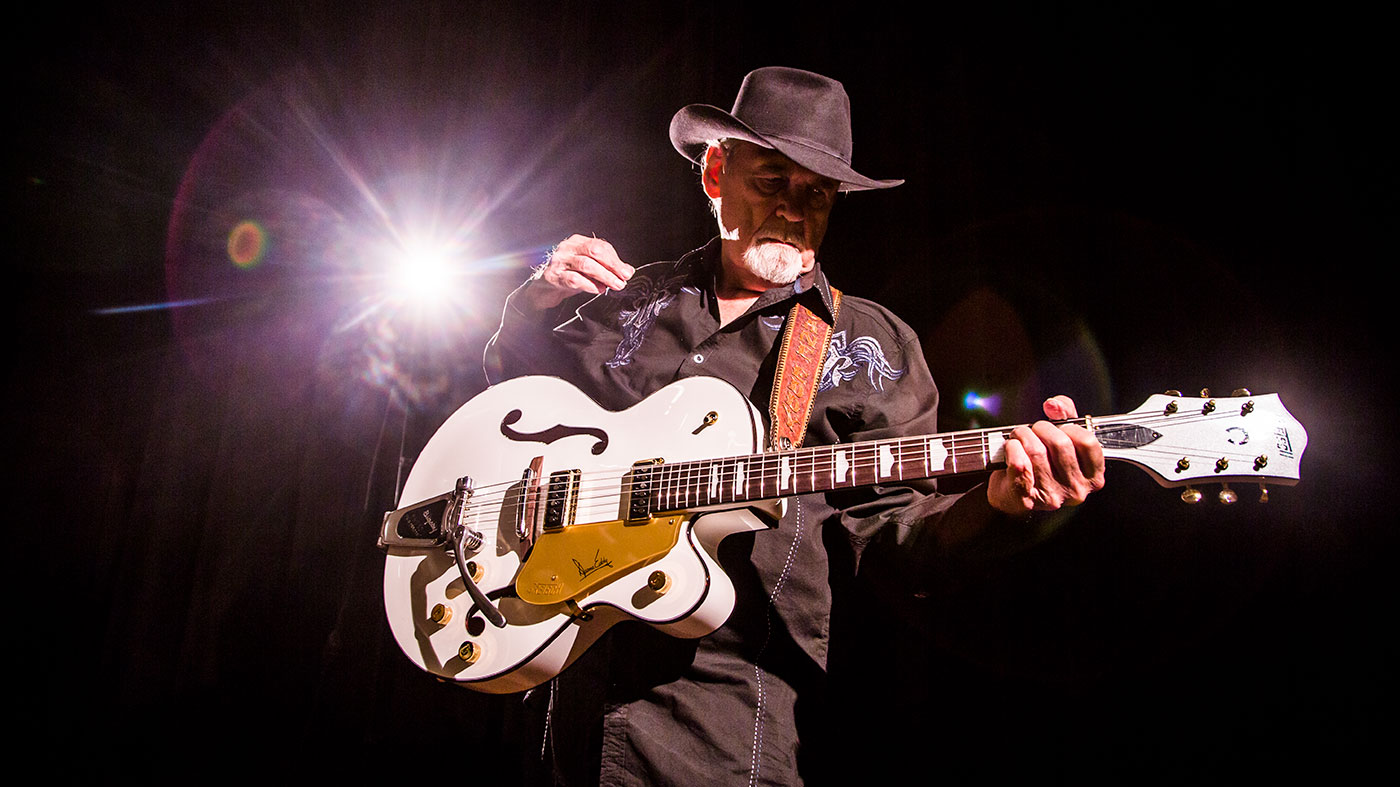
Jamie Dickson is Editor-in-Chief of Guitarist magazine, Britain's best-selling and longest-running monthly for guitar players. He started his career at the Daily Telegraph in London, where his first assignment was interviewing blue-eyed soul legend Robert Palmer, going on to become a full-time author on music, writing for benchmark references such as 1001 Albums You Must Hear Before You Die and Dorling Kindersley's How To Play Guitar Step By Step. He joined Guitarist in 2011 and since then it has been his privilege to interview everyone from B.B. King to St. Vincent for Guitarist's readers, while sharing insights into scores of historic guitars, from Rory Gallagher's '61 Strat to the first Martin D-28 ever made.


